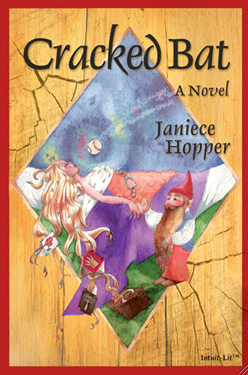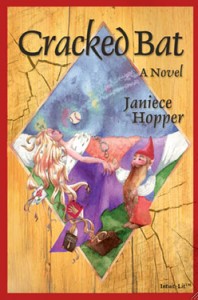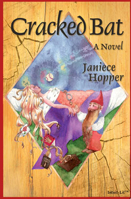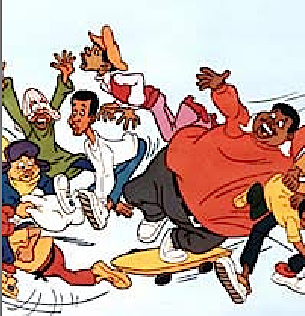
Yes, it’s true: in the fourth installment in this series, I’m moving beyond telling you how to prepare for a conference where you might be able to pitch your book to an agent or editor, either formally or informally, and proceeding toward how to decide what to say when you get there. While some might shake their heads, muttering, “Why on earth is she going over every nuance, when we’re already deep in literary conference season?”, well, I have two answers.
First, for the many, many aspiring writers who (unwisely, I think) put off constructing (or often even thinking about) their pitches until the eve of the conference, I’ve established a super-quick crash course in how to do it: you’ll find it under the aptly-named HOW TO WRITE A PITCH AT THE LAST MINUTE category on the archive list on the lower right-hand side of this page.
Second, years of experience teaching good writers to pitch lead me to believe that just telling you what to do without helping you understand why each part of the pitch is necessary in order to market your work persuasively to agents and editors — including parts that are usually left out of the three-line pitch entirely — usually results not only in less effective pitches, but writers not particularly comfortable with giving them. Call me zany — and believe me, there are plenty of local conference organizers who do — but I just don’t believe that pitching advice that tells writers to blurt out a summary of their books as fast as humanly possible and leaves it at that is actually all that helpful come pitching time.
Hey, I warned you that my approach to pitching was a bit unorthodox.
Contrary to the prevailing wisdom, I believe that the definition of pitching successfully is not merely being able to cram an entire 400-page book into three sentences and spit it out coherently. Instead, I define pitching success as the ability to speak fluently and persuasively about a book in terms that make an agent or editor likely to say, “Gee, I’d like to read that. Please send me the first 50 pages right away.”
I define a pitch’s success by its results, not its conformity to a pre-set model to be used in all instances. I know: radical.
Thinking of it this way makes it far, far easier to make it through the pitch preparation process: instead of grumblingly adhering to an evidently arbitrary and difficult standard of presentation, you’re gearing up to have all of the marvelously fulfilling conversations that will define the rest of your life as a professional writer.
Much nicer to wrap your brain around than croaking out the bare bones of your premise in 10 seconds, isn’t it?
Now that you are prepared for my advice to be a bit offbeat, I am not afraid to shock you with my first unorthodox suggestion:
DON’T start the pitch-prepping process by sitting down and trying to summarize your book’s plot or argument in just a few lines. Instead, let your first step be figuring out where your book would be placed on the bookshelves of Barnes & Noble, Borders, or a similar chain bookstore.
Why? Because this is the single most important piece of information you can tell an agent or editor about what you write. And because everyone in the US publishing industry talks about the demarcations in the same terms, you’re going to communicate a whole lot better with them if you use the book categories they already know. Which are:
For fiction: Fiction (a.k.a. Mainstream Fiction), Literary Fiction, Historical Fiction, Futuristic Fiction (that is not SF. The usual example is THE HANDMAID’S TALE.), Adventure Fiction, Sports Fiction, Contemporary Fiction, Adult Fiction; Women’s Fiction, Contemporary Women’s Fiction, Chick Lit, Lady Lit, Lad Lit; Romance, Category Romance, Contemporary Romance, Historical Romance (designate period), Paranormal Romance, Romantica, Erotica, Inspirational Romance, Multicultural Romance, Time Travel Romance; Science Fiction, SF Action/Adventure, Speculative SF, Futuristic SF, Alternate History, Cyberpunk; Fantasy, Dark Fantasy, Comic Fantasy, Epic Fantasy; Horror, Paranormal, Vampire Fiction; Thriller, Spy Thriller, Suspense, Romantic Suspense; Mystery, Police Procedural Mystery, Legal Mystery, Professional Mystery, P.I. Mystery, Psychological Mystery, Forensic Mystery, Historical Mystery, Hardboiled Mystery, Cozy Mystery, Cops & Killers Mystery, Serial Killer Mystery, British Mystery, Noir, Caper; Western; Action/Adventure; Comics; Graphic Novel; Short Stories; Poetry; Young Adult, Picture Book, Children’s, Middle Readers.
For nonfiction: Entertaining, Holidays, House & Home, Parenting & Families, How-To, Self-Help, Pop Psychology, Pop Culture, Cookbook, Narrative Cookbook, Food & Wine, Lifestyle, Medical, Alternative Medicine, Health, Fitness, Sports, Psychology, Professional, Engineering, Technical, Computers, Internet, Automotive, Finance, Investing, Business, Careers, Memoir, Autobiography, Biography, Narrative Nonfiction, Historical Nonfiction, True Crime, Law, Philosophy, Religion, Spirituality, Travel, Travel Memoir, Outdoors & Nature, Essays, Writing, Criticism, Arts, Photography, Coffee Table, Gift, Education, Academic, Textbook, Reference, Current Events, Politics/Government, Women’s Studies, Gay & Lesbian (a.k.a. GLBT).
Actually, there are a few more, but these are the main ones. For more detailed analysis, again, please see the BOOK CATEGORIES heading on the list at right. Also, the major genre’s writers’ associations tend to provide precise definitions of each subgenre on their websites. But these are enough to get you started.
Pick one.
Before anybody out there starts to freak out about the prospect of having to select the perfect pre-fab label, let me hasten to add: aspiring writers are not singled out for punishment in having to do this; literally every professional author does as well. It’s a technical designation, after all, not a summary of the book’s contents.
And contrary to popular belief, choosing does not define a writer for life: the book category is merely the conceptual box into which all books aimed at a particular already-established market are placed. Literally every book published by a North American publisher has been assigned to such a category.
So calm down and ask yourself: in a marketing display, what kind of books would be grouped around it? How would it be placed so as to suggest that if the potential buyer liked book X, he would probably be interested in your book as well?
Lest any of you fiction writers are tempted to say, “Oh, my book would just be in the literature section, filed under my last name,” that’s not a good enough answer. Nor is, “Oh, I’m a genre-buster — I don’t want to limit myself with a label.”
That kind of answer just isn’t useful to an agent — on order to sell your book to an editor, your agent is going to need to be able to tell him right off the bat what kind of a book it is, not merely that she thinks it’s well written. Similarly, in order to argue that your book belongs in next year’s catalog, an editor is going to have to tell the rest of the folks at the publishing house the book category, just as the marketing department is going to have to tell the distributor, and the distributor the bookstore buyer.
Thus, the book category is in fact the industry shorthand for where a book should be directed in order to sell, at every level. So it follows as night the day that aspiring writers who equivocate between categories because they believe (not entirely without reason) that their books are too complicated to be shoved into a single conceptual box, or even refuse define their work automatically render it harder for all of these people to do their jobs.
And that’s not the world’s best idea, because if you want them to assist you in getting your writing into print, it’s really much more in your interests than theirs to make it as easy as possible to help you.
Let me repeat that, because it’s vital and I’ve never heard any other pitching advisor mention it: aspiring writers who go out of their way to make it easy for folks in the publishing industry to help them succeed tend to garner a heck of a lot more help than those who make it difficult.
Partially, that’s just human nature: a person for whom it’s a pain to do favors tends not to have others leaping forward to do him any. But partially, it’s also because most writers inadvertently make it difficult by not learning how to talk about or present their work professionally.
Which leads me to the other, utterly selfish reason that you should figure out the proper category for your book, and pronto: once you know where the pros would envision your book selling best, you will have both an infinitely easier time pitching AND finding agents to query. Suddenly, those cryptic lists of book types in agents’ guides and opaque conference bio blurbs will spring to life for you.
Unfortunately, the vast majority of aspiring writers do not do their homework in this respect — and believe me, from the pros’ perspective, it shows in their pitches. The industry defines types of books far more specifically than writers tend to do — and, as I’ve been pointing out over the last few days, no agent represents every kind of book. Since they define their work by book category, writers’ reluctance to commit just seems like ignorance of how books are sold.
Does that conclusion seem harsh? Actually, it isn’t, particularly: the sad fact is, the vast majority of aspiring writers out there have only a vague idea of how their books would be marketed to booksellers. So I’m here to tell you: the FIRST question any editor would ask an agent about a book, or a committee would ask an editor, or a book buyer would ask a publishing house’s marketing department is, “What’s the book category?”
But I even as I typed that last bit, I could sense that some of you out there were still feeling abused for having to adhere to the established categories, feeling (and not without some justification) that there’s more to art than marketing labels. If you feel that way, you’re certainly not alone: you can’t throw a piece of bread at a writers’ conference anywhere in North America without hitting a writer who believes that his artistic freedoms are endangered by the very request. Or a writer who has fretted for a year about picking the right category. And anyone who has ever listened to pitches for a living can tell you horror stories about writers who wasted half (or even all) of their pitch appointments complaining about it.
To save any of you from ending up as the subject of such a tale. let’s take a look at how the average pitcher deals with this fundamental question, and why the standard oh, my God, don’t make me pick! responses tend not to impress agents and editors very much.
In the first place, writers often mishear the question as, “So, what is your book about?” rather than what it is, a straightforward request for marketing information. Thus, they all too often give exactly the same response they would give anybody who asked the more general latter question at a cocktail party:
“Well (gusty sigh), it’s a novel…mostly, it’s women’s fiction, but it’s not really a romance novel. I guess it’s also suspense, with thriller elements. And the writing is definitely literary.”
I hate to be the one to break it to you, but to an agent or editor, this kind of response sounds EXACTLY like that noise that Charlie Brown’s teachers used to make: Wah wah wah wah waagh…
Remember, agents and editors think about books as products, rather than merely as works of art or expressions of the inner workings of the writers’ souls. And as products, agents need to sell books to editors, and editors to editorial committees, and marketing departments to distributors, and distributors to bookstores, and bookstores to readers.
I assure you, a vaguely-defined book is much harder to drag through that process. And much, much, MUCH harder for a writer to pitch successfully.
So it’s an excellent idea to tell them up front — as in both your pitch and the first few lines of your query letter — what kind of book it is. But in order to make sense to people in the industry, you need to speak their language: pick one of their recognized categories. In other words, don’t just guess, don’t lump a couple of categories together into a Frankenstein’s monster of a hyphenate, and don’t just make up a category.
How do you know where to start? Glad you asked — you know how I love step-by-step instructions.
1. Learn where book categories lurk.
In this age of rampant standardization of book packaging, this isn’t all that hard to do. Take a gander at the back jacket of most recently-released hardcover books: you will find, usually in either the upper left corner or just above the barcode, a one- or two-word description. That is the book category.
Not sure how to find it? Okay, here’s the back cover of Sarah Vowell’s ASSASSINATION VACATION (a terrific book for anyone interested in political history, by the way; she’s a very funny writer). Follow the lead of my pen:

You may notice that her publisher has listed the book in two categories: biography and travel. That makes perfect sense, because the book both talks about the lives of various murdered American presidents and follows Ms. Vowell’s journeys to their assassination sites. (I’m not kidding: it honestly is very funny.)
The other common locale for a book category, especially on trade paperbacks and softcover books, is in the box with the barcode. Here’s the back of Jonathan Selwood’s hilarious THE PINBALL THEORY OF APOCALYPSE:

Okay, so that last photo was a trifle askew. However, since the novel partially concerns the aftermath of a major earthquake, that seems rather appropriate.
2. Find some recently-released books similar to yours and check how they’ve been categorized.
Think about your book. Can you come up with, say, 3-5 titles that are similar to it in subject matter, tone, approach, voice, etc., that have come out in North America within the last five years? Not similar in ALL respects, necessarily — just one or two may be enough to steer you in the right direction
If you can’t come up with any that are remotely similar, I suspect that you’re not overly familiar with the current book market — a serious liability for anyone hoping to pitch or query a book to someone who makes a living following such trends.
If all else fails, start feeding relevant search terms into Amazon and see what comes up.
3. See how the books on your list have been categorized by their publishers.
Once you have your list, go to a bookstore (either physically or online) and see where those books are housed. That is, most likely, where your book would be categorized, too.
4. From among those categories, select the one that intuitively seems to fit your book best.
Book categorization is not a perfect science — pick the one that comes NEAREST to where you envision the book being shelved in a big bookstore. (Since I’ve written about this topic quite frequently and I’m trying to get us through the pitching basics fairly quickly, for more specific tips on how to do this, please see the BOOK CATEGORIES heading on the list at right.)
Fair warning: many categories overlap — fiction, women’s fiction, and literary fiction, for instance, share quite a bit of common ground. Choose the one that you like best; as long as you’re close, your future agent will be able to tell you how to categorize it.
Whoa, I didn’t even have time to move my hand to the return key before I felt a mighty gust of cries of WAIT! coming from out there. “But Anne,” breathless voices cry, “I honestly don’t know how to categorize my novel. Is it literary, mainstream, or just plain fiction — and will agents hurt me if I guess wrong?”
This is an excellent question — one that I covered at some length in several posts; I would encourage you to go back over this post, this one, and this. You might also try asking yourself few questions about your book:
(a) Does your book assume a college-educated readership? Does it try experiments with structure and language? Is character development more important to the reading experience than plot? If you answered yes to at least two of these, literary fiction would probably be the safest choice.
(b) Is your book aimed at a general adult audience, or is more heavily weighted toward a female readership? (Okay, so this is kind of a trick question, since women buy over 80% of the fiction sold in the US and almost all of the literary fiction, but bear with me here.) If it is genuinely aimed at a general market, fiction would be a good choice.
If it does assume a female readership, or if the protagonist is female, consider women’s fiction. And just in case any of you are harboring the surprisingly pervasive prejudice that women’s fiction label is automatically pejorative: women’s fiction is far and away the best-selling fiction category.
(c) Does your book have a filmic, easily-summarized plot? Are the style and storytelling technique similar to a bestselling author’s? If so, it might be mainstream fiction (also known as commercial fiction).
(d) Is your protagonist relatively young — and have sex with more than one partner/do drugs/have a drinking problem? Does the plot deal with adult-themed issues that probably wouldn’t make it onto network television in the dinner hour? If so, it might be adult fiction or contemporary fiction.
(e) Are all of the criteria in #4 true, but the protagonist is female, under 40, have a sense of humor, doesn’t pursue significant interests in the book OTHER than having sex with more than one partner/doing drugs/having a drinking problem — and yet is not a memoir by Elizabeth Wurtzel? If so, you might want to consider the chick lit category, especially if your protagonist’s interest in shoes and handbags borders on the pathological.
Before any chick lit writer gets all defensive on me, allow me to add that there is some chick lit out there does deal with serious subject matter (see the comments on this post); like many, many other book category distinctions, the difference between women’s fiction and chick lit is often a matter of tone. If you write in either category and are unsure what that means, it would be a grand idea to walk into a bookstore, ask a savvy clerk to point out the three best recent releases in women’s fiction and chick lit, and read the first few pages of each.
All that being said, it’s not completely unheard-of for women’s fiction with a young protagonist to be assigned to chick lit simply due to the sex and age of the writer, or for an agent to decide to submit a book to chick lit editors as chick lit and women’s fiction editors as women’s fiction. Ultimately, categorization is a call the agent to make; all you’re trying to do in a pitch or query is to find a label in the general ballpark.
Which leads me to…
(f) Are you planning on pitching or querying an agent who likes to make this call himself? In that case, you might be best off simply labeling it fiction — but you’re unlikely to know that unless you’ve spoken to the agent personally. If this is the case, you should pick the closest label, then nod smilingly when the agent to whom you are pitching says you are mistaken.
Hey, it’s how those of us already signed with agents do it. I even know a quite prominent author who claims that she doesn’t know for sure whether any particular piece is women’s fiction or memoir until her agent has sold it as one or the other.
All that being said, try not to get too discouraged if your book’s category does not immediately pop to mind. Often, it is genuinely a hard call. Just do your best.
5. Use the book category you’ve chosen to describe your manuscript whenever you are communicating with anyone in the publishing industry.
Feel free to use it ubiquitously. Its uses are myriad: in your pitch, in your query letter, on your title page (if you don’t know where this info should go, please see the TITLE PAGES category on the list at right), in checking an agent’s conference blurb or listing in an agency guide to see whether she represents your kind of book, whenever anyone at a literary event asks, “So, what do you write?”
But whatever you do, NEVER tell anyone in the industry that you have a “fiction novel” — this is a very, very common pet peeve amongst agents and editors. By definition, a novel IS fiction, always, just as a memoir is always nonfiction. (Technically, anyway. Don’t even get me started on how many memoirists have found their books under just-the-facts scrutiny over the last couple of years.)
Some of you are still squirming under the necessity of choosing, aren’t you? “But Anne,” I hear some confused would-be pitchers and queriers cry, “I occasionally see categories other than the ones you’ve listed on book jackets and when authors speak about their work. Therefore, you must be wrong about agents and editors expecting to us to label our books, and I can refer to my manuscript any way I like — or not categorize it at all.”
Oh, that old saw. Naturally, there are new categories popping up all the time, a side effect of the expansive creative impulse of the human mind. And there’s no international police force compelling every published author out there to speak of their books in the same terms.
That doesn’t mean, however, that it behooves an aspiring writer to make up a book category. All one has to do is check out any of the standard agency guides to see why: when asked what kinds of books they represent, agents don’t use descriptions that are only meaningful to themselves and their closest friends; the vast majority of the time, they use the standard category designations.
That being said, generally speaking, it’s safer to pick one of the standards rather than to insist upon a category that has only been introduced recently: if it’s too new, the agent or editor to whom you are pitching may not yet be aware of it yet. (Hey, it happens.)
When in doubt, pick a more general category over a hyper-specific one. Or at any rate, select the more marketable one. It increases your chances of your work sounding to an agent like something that will sell.
But again, try not to stress about it too much. Believe me, if you are off just a little, an agent who is intrigued by your work will nudge you in the right direction, rather than writing you off because you picked the wrong sub-category. In fact, it’s not at all uncommon for an agent to sign a writer and then say, “You know, Ghislaine, I think your book would sell better as women’s fiction than mainstream fiction. Let’s market it as that.”
And if Ghislaine is a savvy writer, she won’t immediately snap back, “Why is it women’s fiction rather than mainstream — because the author possesses ovaries?” (Not all that an uncommon an underlying reason for the choice, actually; some of my work has been categorized that way on apparently no other pretext.) Instead, market-ready writer that she is, she will respond, “If you think it’s a better idea, William. But do you mind explaining the logic to me, so I may consider how you’ve planning to market my work when I’m writing my next novel?”
THAT, my friends, is language the entire industry understands. This is a business where finesse definitely counts.
Hey, I don’t make up the lingua franca; I just speak it. (For more on the ins and outs of defining women’s fiction (particularly when a book occupies the rather broad territory where women’s, literary, and mainstream overlap), please see the three posts beginning here.)
6. What to do if you just cannot bring yourself to apply step 5 to the category that makes the most sense
If you truly get stuck in mid-decision, here is a sneaky trick: go to a well-stocked bookstore and track down a friendly-looking clerk. Describe your book to her in very general terms, and ask her to direct you to the part of the store where you might find something similar.
Then start pulling books off the shelf and examining their back covers for categories.
Hint: don’t be too specific in your description to the clerk — and whatever you do, don’t mention that you wrote the book you are describing. “My favorite book is a suspenseful romantic comedy about murderous contraltos set in the Middle Ages — would you have anything close to that?” tends to yield better results than, “I’m looking for a book about an opera diva who lives in 9th-century Milan, has scores of amorous misadventures, and strangles her conductor/lover. Where would I find that in your store?” The latter is more likely to turn up a puzzled shrug than useful directions.
Repeat in as many bookstores as necessary to start seeing a pattern in where you’re being advised to look. That location is where your book is most likely to be shelved.
Yes, this process can be a pain, but stating your category up front will simply make you come across as more professional, because it’s the way that agents and editors talk about books. Agencies do not impose this requirement in order to torment writers, you know; the category you pick will determine to a very great extent whether any given agent or editor will be even remotely interested in your work.
Because yes, Virginia, there are professionals who will simply not read a query or listen to a pitch unless it is for a book in one of their pre-chosen categories. Agents and editors LIKE making snap judgments, you see. It saves them time.
Sorry to be the one to break it to you.
To put a more positive spin on the phenomenon, think of it this way: if you tell an agent immediately what kind of book you are pitching, the busy little squirrels in her brain can start those wheels spinning toute suite, so she can instantly start thinking of editors to whom to sell your book.
Since that is precisely what you want her to be doing, what are you complaining about?
If you’re still a bit confused and want more help fine-tuning your selection, again, I would recommend taking a gander at the posts under the BOOK CATEGORIES heading at right. In the past, I have spent more time on this particular point; I could easily spend a week on this point alone. (And have, as it happens.)
And if you’ve narrowed it down to a single category, congratulations! You’re ready to move on to Step 2 of writing your pitch.
Which, not entirely coincidentally, will be the subject of my next post. (Hey, I told you I liked step-by-step directions.) Keep up the good work!














